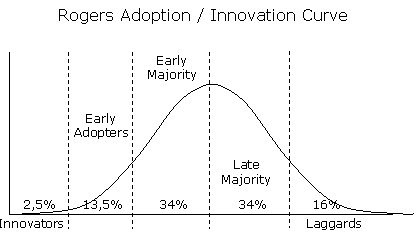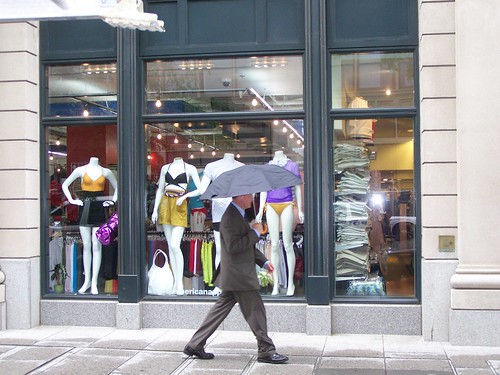Another point about urban retail: Whole Foods, Design within Reach, and American Apparel
The general line in retail store location decisions is that "retail follows rooftops."
In short, it means that typically, chain retailers don't lead, anchor, and stoke and speed positive change by opening stores in neighborhoods that have the potential for improvement (e.g., despite all the talk of H Street's revival, Family Dollar was the first and only chain retailer of "significance" to open on the corridor in the last 10 years, although a Giant Supermarket will open next year).
They come in once it is very much evident that improvement is happening.
Now for those of us in neighborhoods where we know the potential is there, we find this process very frustrating. I've written about it in the past in the entries "Why the future of urban retail isn't chains" and "Store siting decisions."
We know the possibilities are there but the companies won't come, and it's hard to get independent retailers of heft to open similar kinds of stores. So nothing is the result.
But there are a couple key exceptions to this general rule, and they are so exceptional that they deserve to be mentioned. Whole Foods Market, Design Within Reach, and American Apparel are nationally known companies that will locate retail stores in emerging districts--provided of course, that the right demographics are present. (Note that I think H Street NE in DC has the opportunity to develop a similar kind of retail vibe by attracting stores such as these, even if not quite at the scale of the companies mentioned in this entry).
For what it's worth, it's an illustration of the diffusion of innovations curve as developed by Everett Rogers. Whole Foods, Design Within Reach, and American Apparel are early adopters (the second stage), while companies coming in now, like Walmart, are late adopters. But the City Target example is interesting because it represents a more careful targeting and development of a more appropriate store model for the center city. (Just as supermarkets like Harris Teeter have bigger prepared food departments in their urban stores, the City Target is less oriented to providing "family sized" packaged products typically sold in suburban locations.)

Whole Foods Market and center city locations
So one of the commenters in the previous entry on urban retail from yesterday mentioned the Whole Foods Market on P Street NW in the Logan Circle/Dupont Circle area. It was a cryptic comment so I don't know exactly what was implied.
I'm going to take the mention as a counter to my general points, that retailers aren't focused on meeting the city on the city's terms.
It's a reasonable point, not as an illustration of how all the chains are operating, but as an illustration of how Whole Foods Market is an outlier in the context of leading supermarket chains, and upscale ones at that, being willing to open in center city locations.
I've written about that store before (and similar events in the East Liberty district in Pittsburgh, where a Whole Foods, Trader Joes, and other leading chains opened in an emerging district, but one adjacent to two of Pittsburgh's most successful neighborhoods/neighborhood commercial districts--places they wanted to be but had no available retail space in which to locate--that fact is not being adequately captured by reporting on the issue, such as in this New York Times article, "Slumbering Pittsburgh Neighborhood Awakens").
I think the lesson is twofold. First, clearly Whole Foods is very much driven by demographics and market analysis, not perceptions of an area. If their analysis shows a store will be successful, they'll open.
That being said, traditionally their stores have been in outlying urban locations, say like Tenleytown in DC, and not so much in the core of center cities. Although there is the store on P Street NW in DC, and the company is opening a store in Detroit!!!!!!!!!!!!!!!!!!!!!!!!!!!!!!!!!!!!!!!! And it will be downtown.
Granted, the core of the city is attracting new residents, has a number of cultural assets as anchors, and the store will be less than 25,000 s.f. in size, so it won't be a huge risk.
Second, I think the willingness to open new stores in center city locations is partly related to the fact that as a company, Whole Foods Market has grown through the acquisition of multiple regional chains (Fresh Fields in the DC area, Mrs. Gooch, Bread & Circus, etc.) and those predecessor companies, based in their communities, were originally more open to putting stores in center city locations, provided they had the right demographics, and those attitudes and openness were incorporated into the "DNA" of the successor company's real estate strategy-making.
It's fair to say that this makes the company exceptionally different from almost all other chain retailers in the United States.
Design Within Reach
Sells edgy, modern furniture. So it makes sense that they are willing to open stores in edgy, modern, design oriented urban districts, such as in the Pike Place Market area of Seattle or
Adams Morgan in Washington DC
(oops, I guess I am out of the loop, commenter IMGoph reports to me that they closed this location) or the Pearl District in Portland, Oregon.
American Apparel
This company has a lot of negative issues. But they definitely have an edgy vibe and they communicate this sense of self in part by willing to locate in emerging, rather than already established, commercial districts. Maybe Silver Spring Maryland isn't the edgiest place to locate a store, but it is atypical nonetheless. Then again, they've had a store on Hawthorne Avenue in SW Portland Oregon for years and years, and this is typical of the kinds of emerging districts that they like to locate in.

American Apparel store window, Downtown DC.
Labels: big box retail ordinances, commercial district revitalization, commercial district revitalization planning, formula retail, real estate development, retail planning, urban design/placemaking



3 Comments:
Great information about american apparel.
Thank you again for your flawless service, and I look forward to working with you in the future.
Great information about american apparel.
personlized gifts for baby birthday
personalized gifts for her cheap
valentine day gift for bf
Post a Comment
<< Home